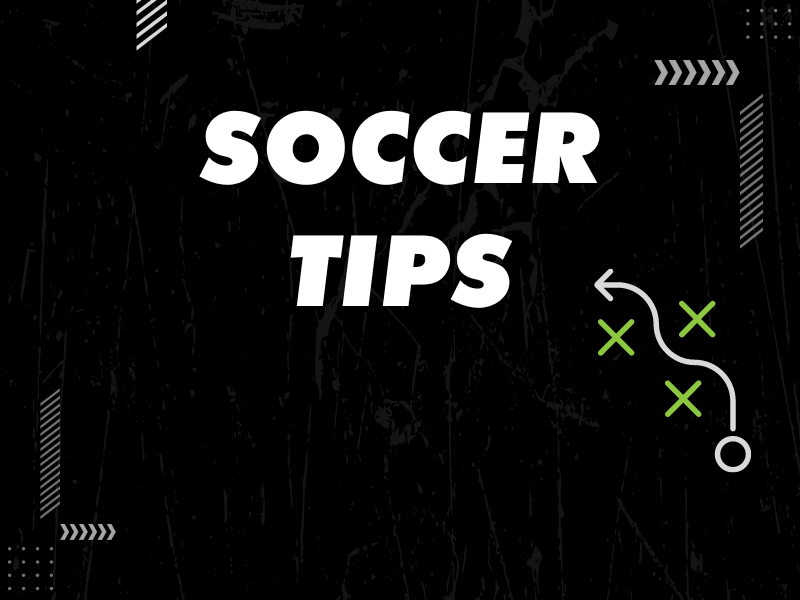There’s a certain art to passing the soccer ball. And passing is the core part of the game. Passing the soccer ball is also the key part of keeping possession and building an attack. Watch the best soccer teams in the world, from Manchester City to Barcelona to Bayern Munich, they are all teams that pass the ball with perfection.
Watch some superb team buildup resulting in our second goal against Arsenal in the most recent league match, from all available angles! Here in this video are all the soccer passing tips and skills you’ll need.
Let’s look at soccer passing tips every player should master:
Play the Soccer Ball at Pace
It’s easier to control a crisp pass and make your next move with the ball when you receive a crisp pass rather than a soft, lazy pass. It takes less effort to re-direct the ball into a space when it is played to you with pace. You’ve heard of a hospital ball right? This is when someone plays a weak or soft pass to you and leaves you open for a hard tackle from a defender.
To avoid this, play the ball at pace to your teammate. Don’t put them into a situation where they are waiting for the ball and the defender can close them down. However, the player receiving the pass has to go to the ball. The two must go together, a crisp pass and then the player receiving the ball rushing to meet the pass.
Striking the soccer ball with pace also creates intensity around your game and it keeps the game flowing. You also show that you are ready to receive the ball back and it sends a message of assertiveness: You want to play and want the ball.
Most importantly though, a teammate is only open for a short period of time before they will be closed down. It’s key to get the ball to that teammate as soon as possible to take advantage of the time and space they have, so that your team or the player you’re passing to can quickly shoot and score.
The Weight of the Pass
However, there are also times when you want to play a soft pass. And in this case you’re sending a different message by the weight of the pass. A slow pass means the player should come back to receive the pass, thus opening up the space behind the player. A very hard pass means you are marked tightly and must shield the ball or play the ball back in one or two touches. This usually pertains to when you’re playing the ball into a forward who is posted up, say near the box. If you play a soft pass then the forward should come back to receive ball. You’re drawing the player back into a space where they can receive the ball. If the pass is hard than they have to lay the ball off quickly.
With all passes there should be a shout or message communicated: “Man on” or “you have time” or “turn” or “hold the ball”. When you pass the ball say something to the player you’re passing the ball to.
Keep the Soccer Ball Moving
The idea behind keeping the ball moving is to setup players in positions where they can take players on – you’re trying to find that player who either has one player to beat or even better, who is open and go straight at goal.
Help create the situation where a player is one versus one.
Try to get the ball and then give it back to them when they are in a better position, as in they have more time and space—that is, when they are open.
In this way you’re acting like an outlet for them so they can set up the defender and take them on. If the defense closes them down again you’re there as support. The attacker can always get the ball back, just keep it moving to find the player in the best attacking position.
The attacking player might drag their defender up the line and check back to the ball. If the player is still tight on them they’ll use you as support and lay the ball back. Then they can try to make a run back down the line again or make a run into the middle. The key is keeping the ball moving until you get the ball into the player’s feet who has the most time, space and best chance to score.
Know What You Want To Do
Is crucial to know what you want to do with the ball before you get it. How do you do this? First off, know where your teammates are on the field before you get the ball. Of course players are always moving and things are always changing, but you have a general sense of where your teammates are positioned.
Second, keep your head up and take a picture of the field before you get it. Along these lines it’s key to have your body open to the field. For instance, if you’re playing wide midfield your shoulders are open to the field. You’ll adjust then when you receive the ball, to shield it from a defender for example, but to start turn your body to open up to the soccer field.
Thirdly, control the ball away from the defender and into the space you want to move into. In other words, control the ball out in front of you so it’s easier to make that next pass. This is your first touch, which should be sharp. Sometimes a first touch can beat a defender just as they close you down you push the ball inside and away you go.
Finally, if there’s a great deal of space, carry the ball into that space and attack it until you’re closed down. This way you’re drawing defenders towards you, to open things up for your teammates. As the defense closes you down you release the ball.
Play the Way you’re Facing
And keep your passing game simple, if a defender is closing you down from behind, play the ball back to the person who passed you the ball. This is called playing the way you’re facing. This way you can break free from your defender to receive the ball again or the passer might switch the point of attack, where there’s more space to work with. This is perhaps the key soccer passing tips thing to master. Because it keeps the game simple.
Do Things Quickly But Don’t Rush
Young players have a tendency to play soccer too fast. Yes, they play too fast at the wrong times. It’s good to play the ball quickly and early, but sometimes you don’t have to rush things. Sometimes It’s ok to start over and lay the ball back and then get the ball again. Young players sometimes only play at one speed and usually that’s way too fast in the wrong areas of the field and at the wrong times. Again, this is one of those soccer passing tips that helps you keep the game simple.
Change of Pace
One of the keys to soccer is a change of pace, and this doesn’t only have to do with beating a player on the dribble. No, change of pace can also be seen when you’re making a run or setting up a play. A few slow and seemingly harmless short passes and then the killer pass in behind the defense. It could be a slight jog back to the ball, a simple layoff pass to your teammate, and then turning and exploding down the line to receive the pass down the line.
Find Your Play Maker
If you watch great teams they have a few point men, or players who act as the central hub of the team, the play makers. These players go and get the ball and then switch the ball from one side of the field to the other or play the ball back so they can regroup. In general, this players act as the calming influence on the team. Think of players like Iniesta or Xavi at Barcelona, they always ask for and look to get the ball.
Next: Learn more soccer passing tips and crossing at these pages: the stock ball, passing skills, crossing the ball, two touch soccer, play the way you’re facing, and passing standards.















